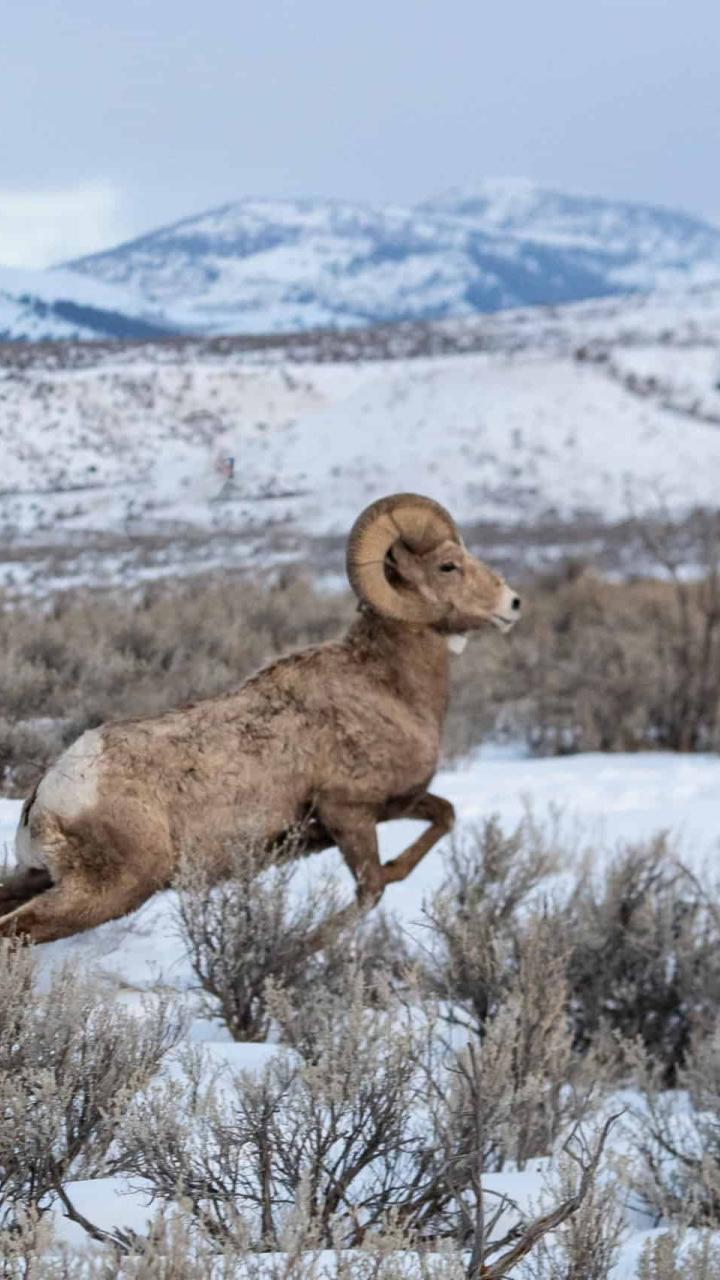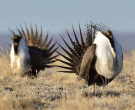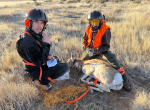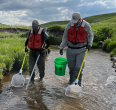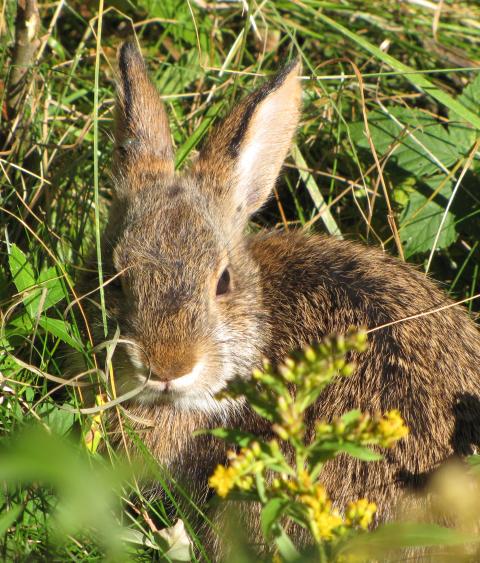Breadcrumb
- Home
- Outdoor News Bulletin
- April 2025
- CRU Program Unveils Two Informative Fact Sheets
Outdoor News Bulletin
Cooperative Research Units Program Unveils Two Informative Fact Sheets
The Cooperative Research Units Program is excited to release two new fact sheets: “A Hawk’s View of 2024” and “10-Year Overview.” The fact sheets highlight our program’s success in training of the next generation of natural resource professionals, applied research, and technical assistance to resource managers. This mission demonstrates a strong return on investment, value to taxpayers, enduring partnerships, outreach to cooperators and the public, and results in thousands of accomplishments each year.
What are the CRUs?
The U.S. Geological Survey’s Cooperative Research Units (CRU) Program was established in 1935 and codified by Congress (Public Law 86-686) in 1960 to enhance graduate education in fisheries and wildlife sciences and to promote research and technical assistance among natural resource agencies and universities.
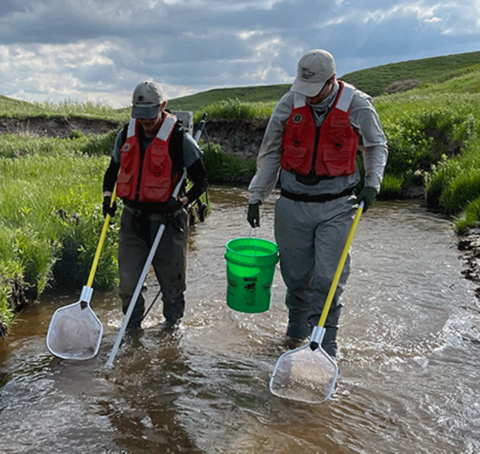
Our program, to which the Wildlife Management Institute is a vital cooperator, comprises 43 units located in 41 states on the campuses of 44 universities. The national office, embedded within the U.S. Geological Survey’s Ecosystems Mission Area, is in Reston, Virginia. Our units are organized into three regions, each led by a supervisor. The regional supervisors include Sammy King (Northeastern), Lisa Webb (Southeastern), and Kevin Whalen (Western).
Our mission focuses on three key priorities:
- Enhance graduate education programs that develop future natural resource managers and researchers.
- Enhance the North American Model of Wildlife Conservation by delivering actionable science for fish and wildlife management to cooperating agencies.
- Enhance cooperators’ capabilities through technical assistance in the use and application of state-of-the-art science practices.
The success of our program lies in our partnerships, where state and federal agencies identify research needs, and federal scientists housed at host universities work with graduate students who conduct applied research to inform management decisions. Each unit is a partnership among the U.S. Geological Survey, a host university, a state agency, the Wildlife Management Institute, and the U.S. Fish and Wildlife Service. The CRU Program is an amazing success because the Cooperators that comprise this partnership 1) value the mission of graduate education, applied research, and technical assistance 2) are the world's leading agencies and organizations conserving our natural resources, and 3) leverage to the fullest their complementary strengths.
The CRU program maximizes taxpayer investment, leveraging every appropriated federal dollar with three additional grant dollars secured by Unit scientists. Over the last 10 fiscal years (2015– 2024), Federal appropriated funding to the program has ranged from $17 to $28 million, which was primarily used for the salaries of Unit scientists and headquarters staff. Unit scientists secured $48 million in grants from cooperators and stakeholders during fiscal year 2024, which was used to support assistantships for graduate students, salaries of postdoctoral researchers, and operating expenses for research activities. These grants supported over 1,100 jobs at host universities. Our host universities contributed over the last 10 fiscal years an average of $22 million in-kind support annually.
Unit scientists work closely with host university faculty members to recruit and train graduate students. During fiscal year 2024, 22 Ph.D. and 56 M.S. students advised by Unit scientists were awarded graduate degrees by host universities. Our alumni often pursue careers with state and federal agencies, non-governmental organizations, and universities.
Leveraging partnerships to address real-world challenges
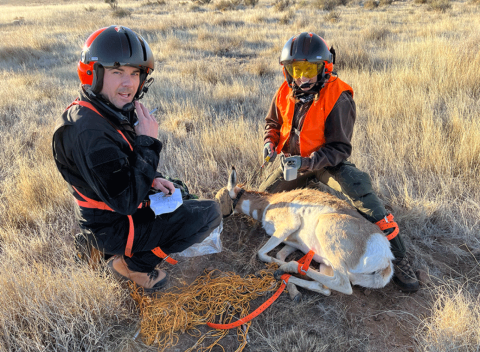
Unit scientists work closely with state agency biologists and managers to design and conduct applied studies. During fiscal year 2024, over 700 research projects addressed agency needs on topics such as hunting and fishing, species pre-listing and recovery, animal migration and movements, invasive species, wildlife and fish disease, food and human wellbeing, drought and floods, remote sensing and artificial intelligence, public health and safety, biosecurity, and prescribed fire and wildfire. Unit scientists, research staff, and students are highly productive; they published over 360 articles in over 130 peer-reviewed journals, from international publications to regional outlets during fiscal year 2024.
Unit scientists address real-world challenges in natural resource management. Problems are identified by the Unit cooperators and research projects are designed to address important uncertainties about how management actions will impact — for example — fish and wildlife habitat, animal populations, or the hunting and fishing public. Unit scientists have been responsible for many innovative advancements over the decades. These advancements range from technological techniques for population monitoring (drones, eDNA) to novel statistical analysis of data (application of occupancy models, landscape movement models) that can inform decisions for management alternatives.
Unit scientists work closely with cooperators and stakeholders to transfer state-of-the-art scientific practices to field practitioners. During fiscal year 2024, Unit scientists completed over 140 technical assistance actions, including advice, analyses, digital app development, and field data-collection support. They led short courses, workshops, speaking engagements, and free webinars. Specific examples of technical assistance include Leandro “Steve” Miranda of the Mississippi Unit who is analyzing a large fisheries database for the Texas Parks and Wildlife Department; Andrew Carlson from the Florida Unit collaborated on a “scorecard” system to assess lake health in Florida; and at the California Unit, Nicholas Som is working with the Bureau of Reclamation to evaluate coho salmon habitat.
Unit scientists play an essential role in sharing complex scientific findings with decision-makers and the public, thereby ensuring that decision-makers have access to the information they need to make informed decisions. This information is also important for enhancing public understanding of our science. The publication “Ungulate Migrations of the Western United States, Volume 4 (2024)” is an example of how we work with cooperators to understand how large-scale migration patterns may affect wildlife management throughout the West. Sarah Sells from the Montana Wildlife Unit provided expertise during public hearings on Montana’s wolf management plan. Brian Folt of the Nevada Unit helped evaluate predator management alternatives, and Grace DiRenzo of the Massachusetts Unit led a workshop on managing chronic wasting disease.
Our success stems from collaborative partnerships focused on solving complex natural resource management problems faced by state and federal decision makers and the communities they support. We thank all the Cooperators and stakeholders of the CRU Program for their passionate and endearing confidence. Explore our expertise directory. Search the project database. View our list of Cooperators. Follow us on X, Facebook, and Instagram.
The ONB features articles from Cooperative Fish and Wildlife Research Units across the country. We believe our readers will appreciate discovering stories about the exciting fish and wildlife research projects that Unit scientists are conducting to solve real-world problems, engage graduate students in experiential learning, and deliver technical assistance to natural resource practitioners. This story is authored by Dawn Childs, USGS Information Specialist, Cooperative Research Units Program and Elise Irwin, CRU Communications Team Lead and Biologist, Cooperative Research Units Program.
